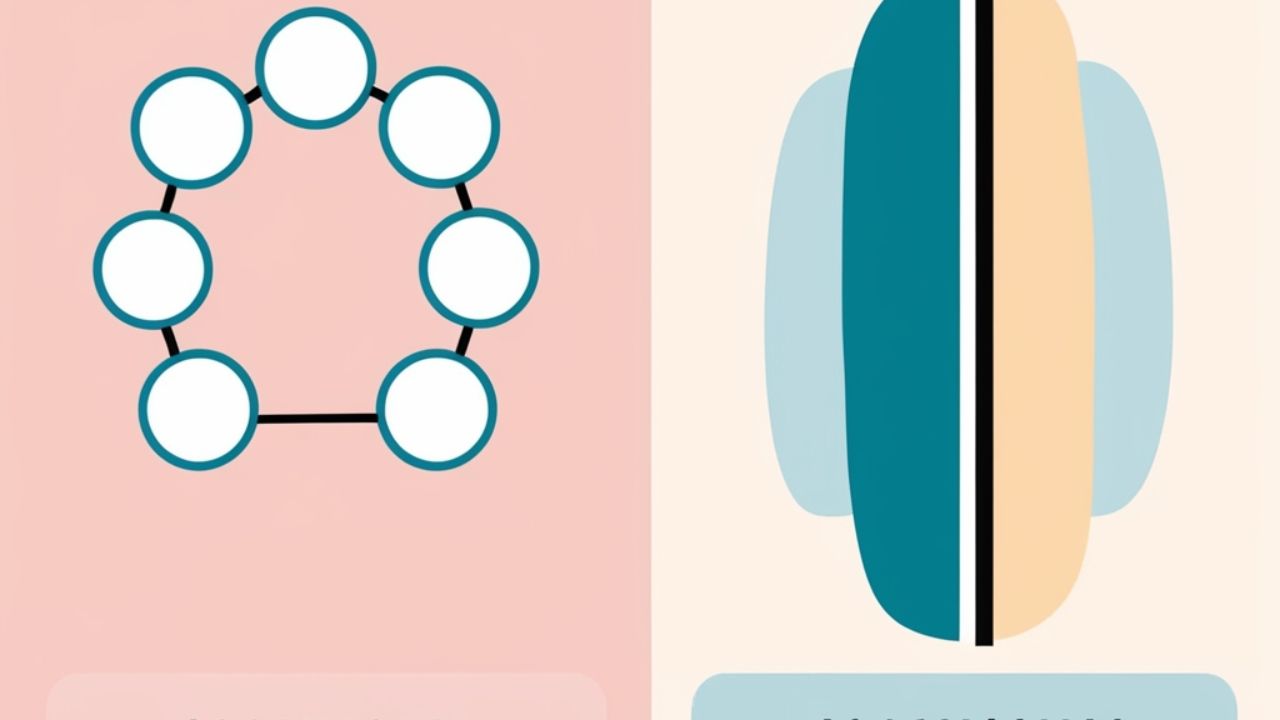A maximum means the largest or greatest value something can reach. It shows a clear top point, like the highest number in a group. In math, the maximum is easy to find because every item can be compared in order.
A maximal is different because it may not be the very biggest. It just can’t grow without breaking a rule or losing balance. In some sets, two things can both be maximal if neither is better than the other.
In daily use, maximal sounds more about reaching full effort, while maximum is about strict limits. Knowing this small difference helps people write clearly and think carefully when they talk about the highest point of something.
Maximal vs. Maximum – Definitions and Core Concepts
Let’s begin by clarifying what each word really means.
What is a Maximum?
A maximum means the biggest or highest point something can reach. It shows the top level where nothing is greater. In numbers, it’s the largest value. For example, in the group {2, 5, 8}, the maximum is 8.
The word maximum helps show clear limits in many things, like speed, height, or marks. It tells where something stops growing. In simple math or daily life, knowing this term helps understand how far something can go before it cannot increase anymore.
What is a Maximal Element?
A maximal element means something that cannot grow or extend without losing its rule. It may not be the greatest, but nothing else can replace it. In a group, it stands strong because no other part goes beyond it.
The maximal element often appears in math and logic when items can’t all be compared. For example, if two students are good in different subjects, each one is maximal in their own way. Both reach their highest level under different conditions.
See also : Klutz Meaning: Definition, Origin & Real-Life Examples
Understanding Order Types: Total vs. Partial Orders
A total order means everything can be compared easily. Each item has a clear place, like numbers where one is always greater or smaller. This type of order helps find the maximum value because every element follows a simple rule.
A partial order works differently because some things can’t be directly compared. For example, one toy may be bigger, while another is brighter. Both have value in their own way. In such cases, we can find maximal elements but not always a single top one.
| Order Type | Definition | Example |
| Total Order | Every pair of elements can be compared (i.e., one is greater or lesser). | Natural numbers, real numbers |
| Partial Order | Some pairs of elements cannot be compared directly. | Subset inclusion, job rankings |
Maximum in Mathematical Context

What Defines a Maximum in Math?
A maximum in math shows the largest value inside a group. It stands above all others and cannot be passed. In simple sets of numbers, the maximum is the one no other number can be greater than.
The maximum appears when things can be fully compared, like heights or weights. It gives a clear top point that belongs inside the group. For example, in {3, 6, 9}, the number 9 is the maximum because it is the greatest.
Uniqueness
If a maximum exists in a total order, it’s unique. You can’t have two “greatest” values unless they’re equal.
Existence Conditions
- A maximum exists only when the set is bounded from above, meaning no value goes beyond a certain limit.
- The maximum appears if the supremum (least upper bound) actually belongs to the set itself.
- If the top value lies outside the set, then no maximum exists within that group.
In Calculus
In calculus, the maximum shows the highest point on a curve. It is where the graph stops rising and starts falling. This point helps find the best or greatest value a function can reach within its range.
Finding the maximum uses methods like derivatives to check where change becomes zero. On a graph, that point looks like the top of a hill. It helps understand limits, motion, and growth in simple and clear ways.
- In calculus, the maximum is the highest point on a curve where the function stops rising and begins to fall.
- It is found by using derivatives to check where the rate of change becomes zero.
- The maximum helps identify peaks in graphs, showing the greatest value a function can reach.
Visual Example:
plaintext
CopyEdit
^
y |
| ●
| ● ●
| ● ● ← Global Maximum
| ● ●
| ● ●
——————————> x
Maximal Elements in Mathematics
What Makes an Element Maximal?
A maximal element means nothing else in the group is better under the given rule. It cannot grow further without breaking its limit. It stays strong because no other element directly takes its place or goes beyond it.
In some sets, more than one maximal element can exist. Each stands at its highest level within its own part. For example, in comparing skills, one student may lead in art and another in math, making both maximal in their own areas.
- A maximal element cannot grow further without breaking the rule or condition of its set.
- It stands strong because no other element directly goes beyond or replaces it.
- Many maximal elements can exist when items cannot all be compared equally.
See also : Bespeckled vs Bespectacled: What’s the Real Difference?
Maximal vs. Maximality
- A maximal set or element cannot be extended without losing a special property or rule.
- Maximality means the state or condition of being maximal within a given structure.
- In math, maximality often appears in ideas like maximal chains, ideals, or subgroups.
Real-Life Example Comparisons
| Scenario | Maximal | Maximum |
| Friend Groups | Friend groups where no one person is friends with everyone else. Each group is maximal. | The group with the largest number of people. |
| Software Versions | A software version that can’t be upgraded without conflict. | The version with the highest number. |
| Product Bundles | A bundle that can’t add more items without exceeding cost limits. | The bundle with the highest total value. |
| Graph Theory | A maximal clique is a fully connected subgraph not contained in a larger clique. | A maximum clique is the largest such group. |
Graph Theory: Maximal vs. Maximum Clique
Maximal Clique
- A maximal clique is a group of connected points where every point links to all others.
- It cannot grow larger without losing its full connection property.
- There can be several maximal cliques in one graph, each complete in its own group.
Maximum Clique
A maximum clique means the largest group of connected points in a graph. Every point inside this group links directly to all others. It shows the biggest possible connection where no extra point can join without breaking the link rule.
In graph problems, the maximum clique helps find the strongest group or network. It represents the highest number of connections that can exist together. This idea is useful in computer science, social networks, and many real-life mapping systems.
- A maximum clique is the largest possible fully connected group of points in a graph.
- It shows the greatest number of nodes linked directly to each other.
- Only one maximum clique exists because it represents the biggest complete connection.
Zorn’s Lemma and Maximal Elements
Zorn’s Lemma is an important idea in mathematics. It says that if every small ordered group has an upper bound, then the whole set has at least one maximal element. This helps in proving the existence of special objects in big systems.
The rule of Zorn’s Lemma appears in areas like algebra and logic. It helps show that certain structures always contain a maximal element. For example, it proves every vector space has a basis, which is a strong building block in mathematics.
- Zorn’s Lemma states that if every ordered chain in a set has an upper bound, the set contains a maximal element.
- It is a key concept in set theory, helping prove the existence of important mathematical structures.
- Examples include showing that every vector space has a basis and every ideal can extend to a maximal ideal.
Practical Usage in Language: Maximal vs. Maximum

Maximal in Language
- The word maximal shows reaching the fullest level possible within certain limits or conditions.
- It describes effort, strength, or effect that cannot increase without breaking balance.
- Common phrases include maximal effort, maximal risk, and maximal protection, showing the highest achievable extent.
Maximum in Language
- The word maximum means the absolute highest or largest limit something can reach.
- It describes measurable boundaries like maximum speed, maximum height, or maximum capacity.
- It shows a fixed top point beyond which no further increase is possible.
Usage in Academic Fields
| Field | Maximal Usage | Maximum Usage |
| Computer Science | Maximal matching, maximal independent set | Maximum flow, maximum path |
| Linguistics | Maximal projections in syntax trees | Maximum length of utterances |
| Biology | Maximal gene expression under constraints | Maximum heart rate, maximum lifespan |
| Economics | Maximal utility combinations | Maximum profit, maximum revenue |
Common Misconceptions
Misconception 1: Maximal Means Greatest
Wrong. A maximal element might just be one that no other directly beats – not necessarily the largest.
Misconception 2: Maximal and Maximum Are Interchangeable
False. Especially in logic and algorithms, confusing them can break code or invalidate a proof.
Misconception 3: Maximal is Just a Fancier Word
Nope. They have technical, distinct meanings, especially in mathematical and scientific contexts.
| Aspect | Maximal | Maximum |
| Order Type | Partial order | Total order |
| Can Have Multiples? | Yes | No (if it exists, it’s unique) |
| Always Exists? | Not guaranteed | Not guaranteed |
| Field Examples | Graph theory, Zorn’s Lemma | Calculus, optimization |
| Real-Life Phrase | Maximal benefit, maximal effort | Maximum height, maximum score |
Final Thoughts
Understanding maximal and maximum builds clear thinking in math and language. These words look similar but have special meanings. One shows the top value, and the other marks the limit that cannot grow further without breaking a rule or condition.
Knowing how to use maximal and maximum helps in learning, writing, and solving problems. It makes ideas sharper and communication stronger. Using them correctly gives confidence in both study and real life, where clear meaning always brings better understanding.
FAQs
What does maximal mean?
“Maximal” means the greatest or largest possible within certain limits, often used in mathematics or optimization contexts.
What is the difference between maximum and maximal matching?
Maximum matching is the largest possible set; maximal matching can’t be extended further but may not be the largest.
What is a maximal in math?
In math, “maximal” describes an element that cannot be increased without breaking specific conditions or rules.
What is the difference between maximal and maximum path?
A maximal path cannot be extended further, while a maximum path is the longest possible among all paths.

Join Bibcia on a journey to master English grammar. Discover easy lessons, writing tips, and practical examples designed to make learning grammar simple and effective.










